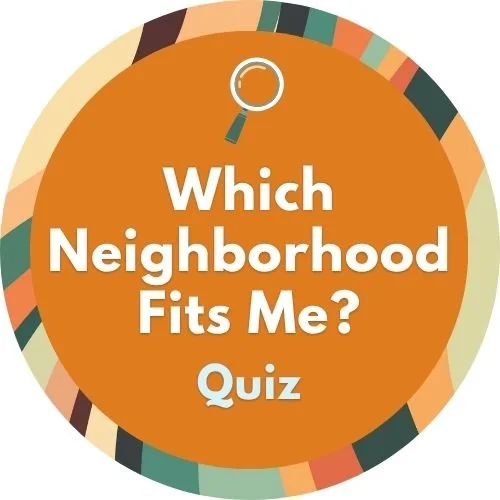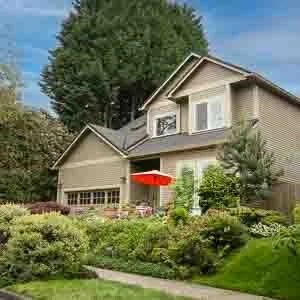
The Enduring Appeal of Old Portland-Foursquare Homes
A Time-Tested Style
That Continues to Shine
The Beauty of Simplicity
The Smart, Spacious Layout That Made Foursquares So Popular
The Old Portland Foursquare is one of the city’s most iconic early 20th-century home styles, known for its solid craftsmanship, practical floor plan, and clean, geometric lines. Popular between the 1895s and 1930s, these homes emerged as a reaction against the excessive ornamentation of Victorian houses, instead favoring simplicity, efficiency, and durability. Built to accommodate growing families, Foursquares maximized space with their two- to two-and-a-half-story cube-like design, central staircase, and symmetrical layout.
These homes were built to last, using cedar lap siding, sturdy woodwork, and large windows to create bright, welcoming interiors. The main floor typically includes a living room, dining room, kitchen, and an additional bedroom or study, while the upper level houses three to four bedrooms and a single bathroom. With full-width porches, wide stairs, and dormered hipped roofs, Foursquares offer a strong, stately presence on tree-lined streets, especially in Northeast and Southeast Portland, where many have been lovingly restored or thoughtfully updated.
Over time, the Old Portland Foursquare evolved, incorporating influences from the Prairie School, Craftsman, and Classic Cottage styles. Some feature stucco exteriors and strong horizontal lines, while others boast exposed rafters, built-in cabinetry, and detailed woodwork. Whether preserved in its original form or adapted for modern living, the Old Portland Foursquare remains a defining feature of Portland’s architectural history—a home style built for practicality, charm, and longevity.
Explore Portland’s Best Neighborhoods
for Old Portland-Foursquares
Irvington
One of Portland’s most architecturally rich neighborhoods, Irvington is home to a stunning collection of well-preserved Old Portland Foursquares. Wide, tree-lined streets and deep lots showcase the grand scale of these early 20th-century homes, many of which have been lovingly restored to highlight their original craftsmanship.
Sunnyside (Hawthorne District)
Located in Southeast Portland, Sunnyside is known for its historic charm and eclectic energy. The neighborhood features classic Foursquare homes with spacious front porches, high ceilings, and timeless details, blending seamlessly with the vintage shops, bookstores, and cafés along Hawthorne Boulevard.
Buckman
One of Portland’s earliest neighborhoods, Buckman offers a mix of historic Foursquares, Craftsman homes, and Victorian-era residences. Many of the Foursquares here still feature their original cedar lap siding, large picture windows, and built-in cabinetry, reflecting the craftsmanship of the early 1900s.
King & Vernon (Alberta Arts District)
In Northeast Portland, the King and Vernon neighborhoods sit within the Alberta Arts District, an area known for its vibrant community and colorful murals. Alongside the bungalows and cottages, you’ll find plenty of Old Portland Foursquares with their characteristic boxy shape, hipped roofs, and functional layouts, making them a popular choice for homebuyers who appreciate both history and practicality.




What Makes a Foursquare Home Unique?
Foursquare homes are characterized by their boxy, two-story design, hipped roofs, wide front porches, and efficient four-room layouts per floor, offering a timeless blend of practicality, simplicity, and classic architectural charm.
Characteristics
Classic and Spacious Design – Typically two to two-and-a-half stories, these homes feature a cube-like shape with a straightforward, four-room-per-level layout, maximizing space and function.
Hipped Rooflines – Most Foursquares have a pyramidal hipped roof with wide eaves, often accented by a single dormer on each plane for additional upper-floor light and ventilation.
Welcoming Front Porches – A full or partial-width porch with wide stairs defines the entry, adding to the home’s classic, inviting feel.
Symmetry with a Twist – While the front façade is typically symmetrical, the entryway is often offset, creating a slight variation in balance without disrupting the home’s clean lines.
Large Windows for Natural Light – Front-facing picture windows are common, with double-hung windows throughout, often featuring six-over-one or eight-over-one multi-pane designs.
Cedar Lap Siding for Durability – These homes were often clad in cedar lap siding, built to withstand Portland’s wet climate while maintaining a classic aesthetic.
Simple Yet Sturdy Woodwork – Unlike the intricate details of Victorians, Foursquares kept things streamlined and functional, with minimal ornamentation and durable materials.
Prairie Influences – Some Foursquare homes have a lower-pitched roof, banded trim, and square porch columns, taking cues from the Prairie School movement.
Craftsman Details – Other variations feature exposed rafters, built-in cabinets, window seats, and buffets, blending Foursquare functionality with Arts & Crafts charm.
The Classic Cottage Adaptation – A smaller, single-story version of the Foursquare, the Classic Cottage maintains the same efficient layout with a cozy, approachable feel.
Built to Last
Built between the 1895s and 1930s, Old Portland Foursquare homes emerged as a practical response to the ornate Victorian era, favoring clean lines, solid craftsmanship, and efficient layouts. These homes quickly became a staple of Portland’s growing early 20th-century neighborhoods, offering spacious yet simple designs that remain just as functional and desirable today.
“Built between the 1895s and 1930s, Old Portland Foursquare homes emerged as a practical response to the ornate Victorian era, favoring clean lines, solid craftsmanship, and efficient layouts. These homes quickly became a staple of Portland’s growing early 20th-century neighborhoods, offering spacious yet simple designs that remain just as functional and desirable today.”
Old Portland Foursquare
Homes for Sale in Portland, Oregon
.
Your Search, Your Way
Experience the Beauty of Pacific Northwest Architecture
At Campbell Salgado Real Estate Group, we appreciate the Foursquare room layout as we live in one ourselves.
The efficient, no-nonsense layout of this timeless style is something we personally connect with, from the central staircase that naturally divides living spaces to the light-filled rooms and sturdy craftsmanship that have stood the test of time. We love how this home style prioritizes practicality without sacrificing charm, offering a spacious yet cozy feel that works as well today as it did over a century ago. Whether you’re searching for a classic Foursquare to call home or looking to sell one with care, we bring our personal experience and deep appreciation for this iconic Portland style to every step of the process. Call or text us at 503-951-8547 to start your journey today.
Kim Campbell & Francisco Salgado
















